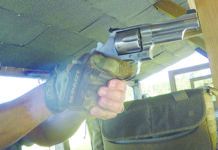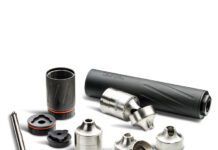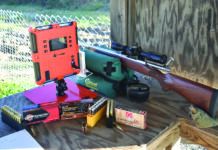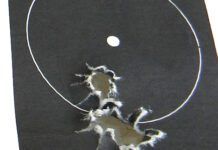In the May 2009 issue we tested four semi-automatic rifles chambered for 308 Winchester. Our test rifles were the DSA FAL SA58 No. SA58B21CM, $2095; the FNH USA FNAR Light Barreled Rifle No. 3108929250, $1821; the Springfield Armory Loaded M1A No. MA9226, $2363; and the Fulton Armory Universal Precision Rifle, $1969; an AR-style gun based on Fultons Titan II lineup. The winner of the test was the Springfield, which earned a B+ grade from our testers, followed closely by the FNH with a B grade. Trailing those rifles were the C- rated DSA, which didnt show enough accuracy for our tastes, and the Fulton Armory Universal Precision Rifle, which we rated as a D. The summary for the UPR said, “Too many malfunctions caused us to downgrade this rifle. If it were only a matter of a bad magazine, then this is a good example of why all guns, especially expensive ones, should be shipped with an extra magazine. But when it ran properly we think this was the best AR-10 weve handled. If youre willing to fix the problem under warranty, then adjust the grading yourself.”

Because the article was negative regarding Fultons UPR, we offered W. Clint McKee, the companys president, the chance to respond at length to the May article. He did so in “Firing Line” in the July 2009 issue, writing, “Regarding your test and D grade of the Fulton Armory UPR in the May issue, we received the rifle back and test-fired it without doing anything to it. That is, we simply took it out of the shipping box, ran a patch down the bore to clear any potential obstruction and then just shot it. Shot it with the mag Roger Eckstine received, and with some mags off the shelf, with round counts of 4, 9, and 19. We even shot it with one additional round forced into the mag (10 in the 9-round mag, 20 in the 19-round mag), and we even held it loosely (not against a hard backstop like a shoulder) which can cause short-stroking in semiautos), and still it fired every round, every way, flawlessly. Not a single malfunction. Not one.
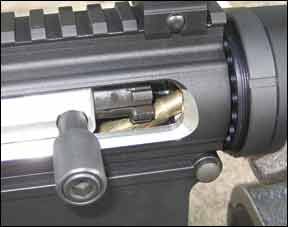
“The rifle has not been disassembled, cleaned, lubed, nothing. I have instructed that it remain this way, untouched, so we can test it again, and again. For a rifle that reportedly functioned so poorly it could not even be used to complete your testing, a rifle that performed so horribly that you failed it in a public venue (by dropping it from the test) without any communication/question/elucidation as to possible causes from the manufacturer is simply incomprehensible to me.
“Though we didnt find anything wrong to repair, were shipping it back to Houston for the customer, the Gun Tests team, to reshoot. If it functions correctly, as I expect it will, I hope youll revise the guns grade because youll find the UPR works properly, and Fulton Armory gave its customer the prompt attention that every purchaser of our products gets.”
This Special Report recaps our follow-up testing of the UPR. The results from our retest were conducted by Benjamin A. Brooks, one of the magazines FFL gun coordinators and a longtime shooter with a Master ranking for across-the-course High Power.
How We Tested
The set-up was at a 100-yard range on a concrete shooting bench. Weather conditions were 88 degrees with clear to partly cloudy skies, winds were calm. The rifle was set on a Target Shooting Model 500 Steady Rest. The five-round magazine (believed to be the same magazine originally tested) was loaded with four rounds of Black Hills 168-grain BTHP 308 Match ammunition. The intent was to fire one shot in each five to seven seconds, until the magazine was empty, which would be similar to firing the 300-yard rapid-fire string of across-the-course High Power rifle shooting.
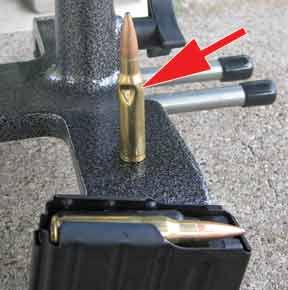
The third round failed to feed and jammed in the bolt. This scenario was then repeated, except we used a 20-round magazine provided by Fulton when the company returned the gun for retest. The 20-round magazine was not provided in the original test.
The next ammunition tried was Remington 150-grain soft points. We placed four rounds in the 20-round mag, closed the bolt, and fired. The second round failed to feed as it jammed in the bolt. The next ammunition tried was Remington 168-grain BTHP Match. We placed four rounds in the 20-round magazine, closed the bolt and fired. The third round failed to feed. The next ammunition tried was Black Hills 168-grain BTHP 308 Match of a different lot. Three rounds were loaded into the 20-round magazine. When we closed the bolt, the first round jammed into the bolt chamber and shoved the bullet deeper into the cartridge case. We cleared the rifle and re-started with the remaining two rounds. The first round fed and functioned, but the second round likewise jammed the bullet into the 308 case. We reloaded with two rounds, and again the second round “bullet jammed” into the 308 case.
We then loaded four rounds of Black Hills 175-grain BTHP Match ammunition into the 20-round magazine. When we closed the bolt, the first round failed to feed as it jammed into the bolt. We cleared the rifle and started again, and the next first round failed to feed and jammed the bolt. The test was stopped at this point.
After we encountered these problems, we initiated a number of conversations with
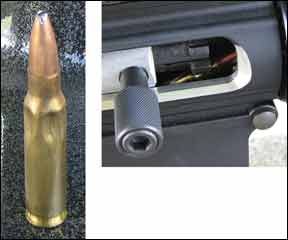
fellow competitive shooters and consulted armorer documents to determine a specific reason for this rifle to fail to cycle. The only mechanical function that may involve this situation is the magazine-to-magazine-well fit. We noticed that both the 5-round magazine and the 20-round magazine, when properly seated in the rifle, had movement front to back. If this movement occurs during cycling, it could contribute to failure to feed. We also noticed that if we placed a hand firmly on the bottom of the magazine (i.e., a slight pushing upward of this hand, as in a modified Standing position) and fired, there were no failures to feed. We did note that the magazine has a latch-hole on the side near the rear, an upset area along the backside of the magazine, and nothing else to restrain it when in place. In comparison, M14/M1A magazines have a latch hole in the front, and a locking lug in the back.
Rifle Returned to Fulton Armory
After the follow-up test, we again returned the UPR to Fulton Armory, along with a copy of our secondary findings. McKee wrote back, “We received it. Thank you. We test-fired it and on the 29th round, we had a failure to feed. Going over the rifle we discovered two things: DPMS mags and a double extractor spring. We no longer use either of these designs, and have found the intermittent maladies have virtually disappeared.”
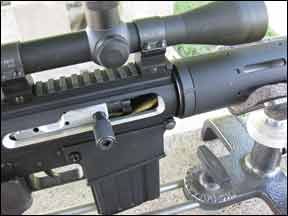
Our Team Said: In our initial test and in the followup, our shooters noted that the Fulton Armory Universal Precision Rifle shot accurately and was well made. Also, we were impressed with the customer-service efforts that the Fulton team expended. The actions the company took were timely, friendly, and focused on solving the problem. In all the correspondence weve had over the years, Gun Tests readers have said this is the kind of positive experience theyve had with Fulton as well.
However, because our retest showed duplication of the original problems we encountered, we cannot adjust the D grade of the rifle we shot and reshot. Thus, our intial advice stands: “When it ran properly, we think this was the best AR-10 weve handled.” We look forward to shooting the Fulton Armory Universal Precision Rifle again with new magazines and extractors.






